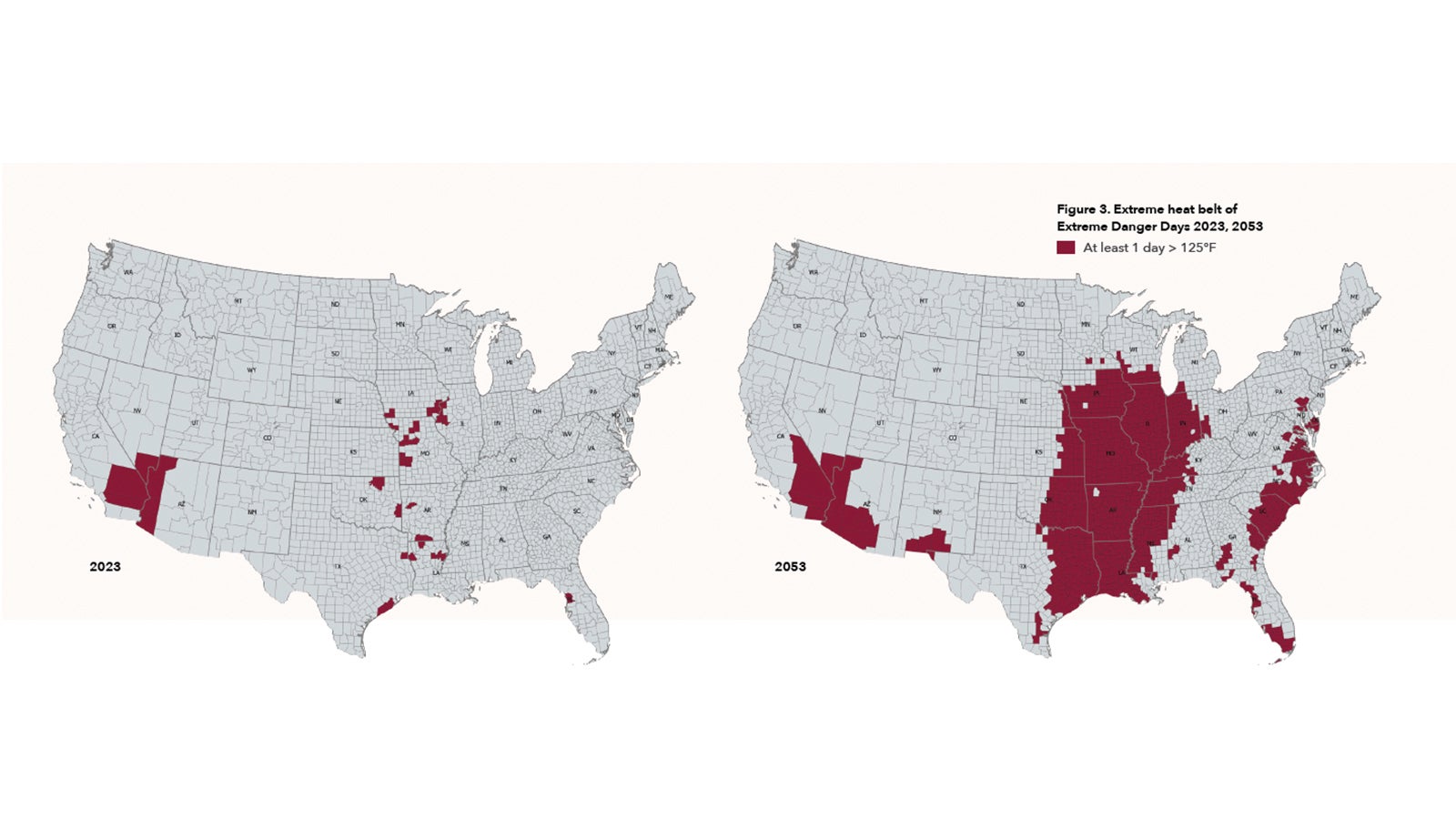An ‘extreme heat belt’ will impact over 100 million Americans in the next 30 years, study finds
(CNN) — Worsening heat and humidity as a result of climate change will bring extremely dangerous heat indices to much of the United States in the next 30 years, increasing both the intensity and frequency of the hottest days of the year, according to a new study published Monday.
Temperatures above the threshold of the National Weather Service’s “extreme danger” category, when the heat index is more than 125 degrees Fahrenheit, is expected to affect about 8 million people in the US this year. But by 2053, 13 times that many people — 107 million — will experience that extremely dangerous heat, according to the study by the climate research group First Street Foundation.
“The results indicate that the incidence of extreme heat is growing across the country, both in absolute and relative terms,” the study states.
Temperatures in some areas will increase more than in others, including a so-called “extreme heat belt,” stretching from Texas all the way to the Great Lakes, the nonprofit’s study found.
More than 100 million Americans in this region will experience temperatures above 125 degrees (52 degrees Celsius) during their hottest stretches of the year, more than 10 times the number expected currently.
Using a peer-reviewed extreme heat model, First Street Foundation used property-level data to find the hottest seven days of the year currently and compared that to the equivalent in 30 years. On average, the seven hottest days will increase to 18 by 2053, the researchers found.
But in the southern half of the country, the number of hottest days will grow to around 30 — meaning what was once the hottest week of the year will become the hottest month by the 2050s, according to the study.
Florida’s Miami-Dade County will see the largest shift in extreme temperatures, where the hottest seven days of the year in 2023 (heat index of 103 degrees) will occur on 34 days in 2053. Other locations in Florida and along the Gulf Coast are likely to experience more than 30 additional days of heat indices above 100 degrees by 2053, the study found.
Nationwide, the number of counties expected to reach a heat index of 125 degrees at least once a year will jump more than 20-fold from 50 in 2023 to 1,023 in 2053, according to the study.
The probability of local heat waves — defined as temperatures well-above normal for three consecutive days — will also increase across the country, but is highest along the West Coast, according to the study.
“Interestingly, exposure to Consecutive Local Hot Days is most likely to occur in West Coast states, while states in the Midwest, Southeast, and East Coast are most at risk of exposure to extremely dangerous temperatures, meaning virtually the entire country is subject to increasing perils associated with heat exposure,” the study finds.
The study also determined a projection of change for each of the US states.
